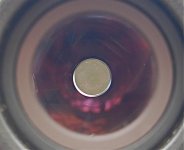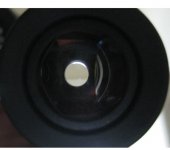The biggest problem I have with optics is glare. I don't know if I am using the correct optical term, but what I mean is the problem of being in a relatively bright place and looking in the general direction of the Sun. What happens is that I get a foggy look, sometimes so extreme that I can't see anything.
In my very limited experience some binoculars and scopes are horrible and some are excellent. None of this 90% of the best business.
I seem to be always running into this problem. Yesterday I had a Red Tailed Hawk cruise right over my head at 30 to 40 feets and then land in a tree 50 yards away. I could barely see it through my B&L Discoverer 8X42 Porro's, but I could see it to some extent. I am sure that if I had the same thing happen to me in Nov. to April with not leaves on the trees and all the light colored leaves on the ground it would have been much worse. I have had rifle scopes (Burris and Weaver) that show nothing but a bright yellow fog if you look within 20 degrees of the Sun in November.
The only optical instrument I have ever looked through that really minimized this are Leupold rifle scopes. These scopes have a reputation of being mediocre optically but you can see things clearly through them even when looking in the general direction of the Sun.
To me glare control is the most important feature of any optic to be used outside, but rarely mentioned by anyone reviewing optics. When it is mentioned, it seems to be an afterthought. Is there any place I can find comparison of different binoculars with respect to this problem. Is the problem solely controlled by internal "baffleing", whatever that is?
To me, worrying about resolution in arc seconds is absurd if you have even moderate glare problems, which makes it difficult to see any detail f you are looking in the general directlon of the Sun into a woodsy area. Many of the birds in my area have the annoying habit of landing in trees with no regard for the fact that they are in between me and the general direction of the Sun!
By the way, my B&L Discoverer's do very well the streetlight at dusk test. Its that annoying Sun and woods problem the is their downfall.
In my very limited experience some binoculars and scopes are horrible and some are excellent. None of this 90% of the best business.
I seem to be always running into this problem. Yesterday I had a Red Tailed Hawk cruise right over my head at 30 to 40 feets and then land in a tree 50 yards away. I could barely see it through my B&L Discoverer 8X42 Porro's, but I could see it to some extent. I am sure that if I had the same thing happen to me in Nov. to April with not leaves on the trees and all the light colored leaves on the ground it would have been much worse. I have had rifle scopes (Burris and Weaver) that show nothing but a bright yellow fog if you look within 20 degrees of the Sun in November.
The only optical instrument I have ever looked through that really minimized this are Leupold rifle scopes. These scopes have a reputation of being mediocre optically but you can see things clearly through them even when looking in the general direction of the Sun.
To me glare control is the most important feature of any optic to be used outside, but rarely mentioned by anyone reviewing optics. When it is mentioned, it seems to be an afterthought. Is there any place I can find comparison of different binoculars with respect to this problem. Is the problem solely controlled by internal "baffleing", whatever that is?
To me, worrying about resolution in arc seconds is absurd if you have even moderate glare problems, which makes it difficult to see any detail f you are looking in the general directlon of the Sun into a woodsy area. Many of the birds in my area have the annoying habit of landing in trees with no regard for the fact that they are in between me and the general direction of the Sun!
By the way, my B&L Discoverer's do very well the streetlight at dusk test. Its that annoying Sun and woods problem the is their downfall.





